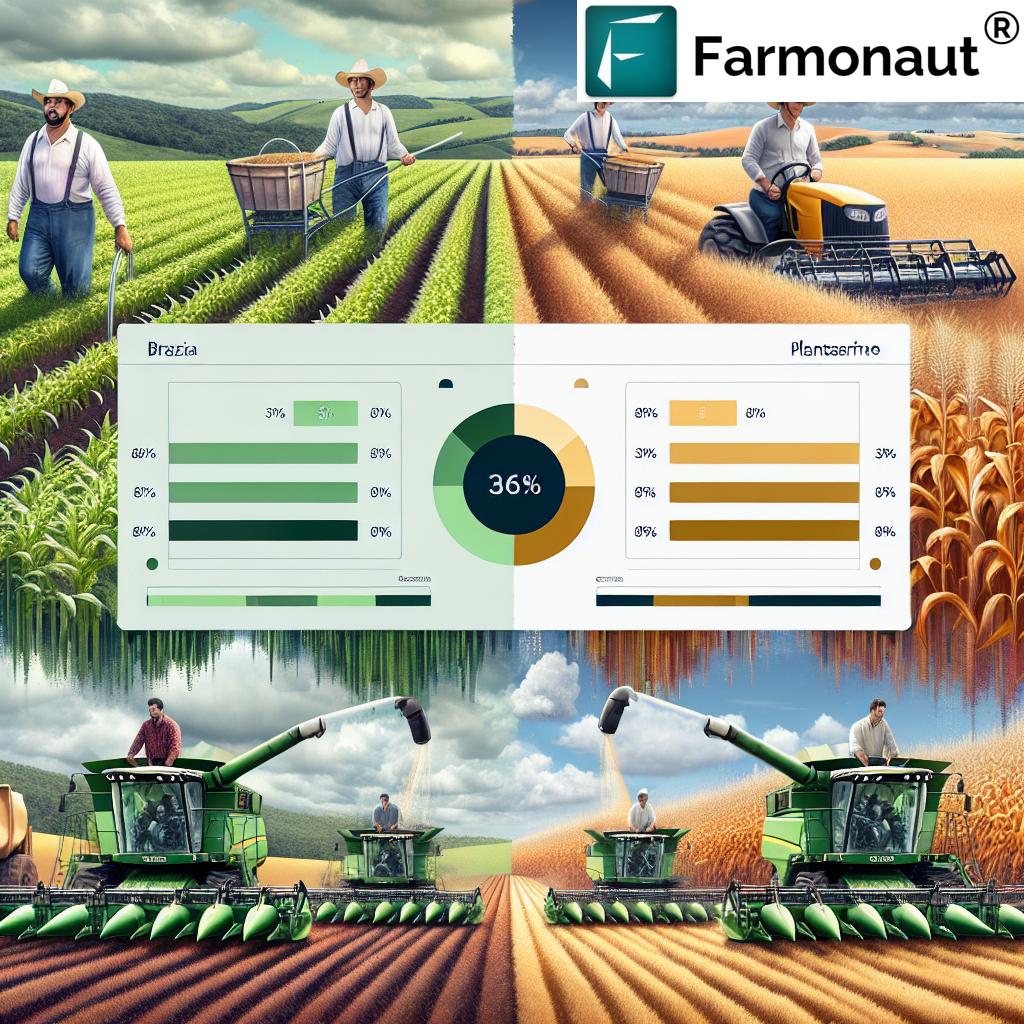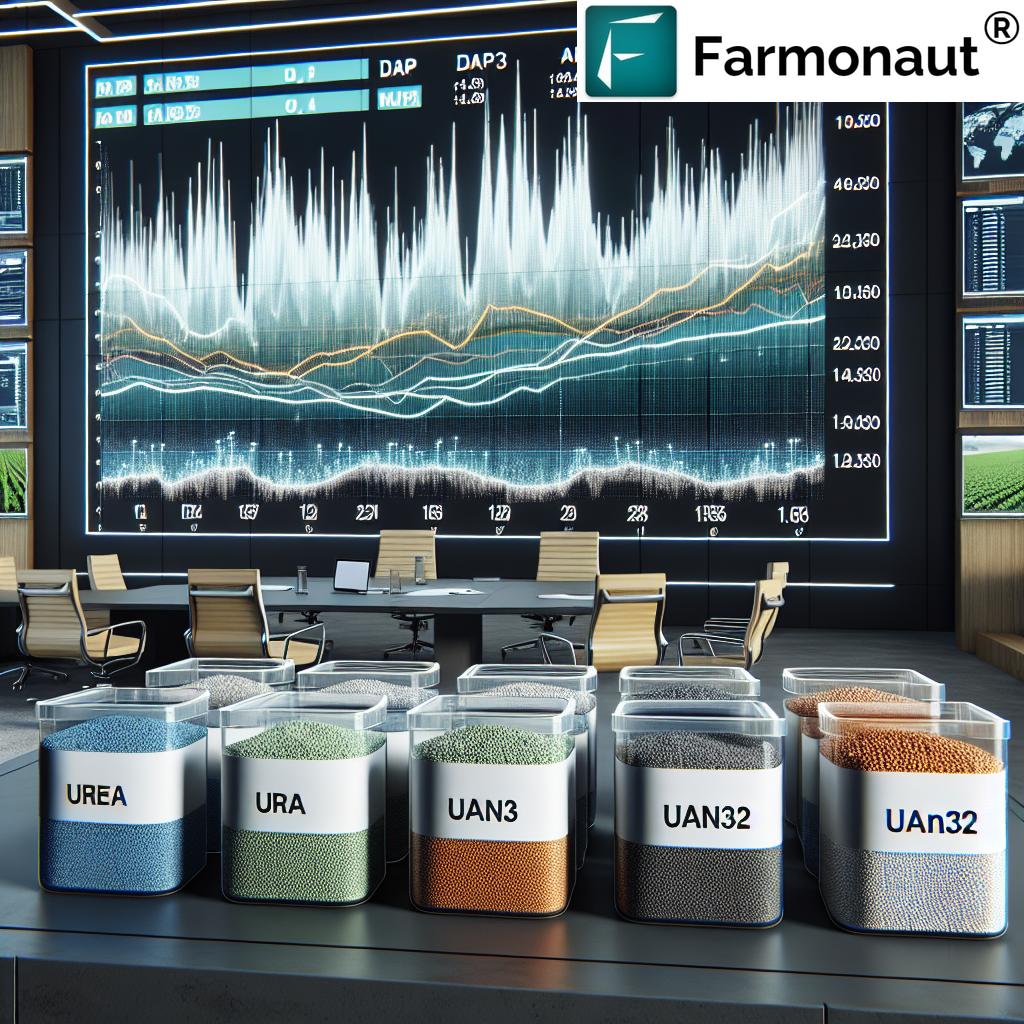Soybean Surge: Chicago Futures Rebound Amid U.S. Harvest Boom and Global Supply Squeeze

In a surprising turn of events, Chicago soybean futures have rebounded after a three-session decline, marking a significant shift in the global agricultural commodity landscape. This resurgence comes amid a complex interplay of factors, including the ongoing U.S. soybean harvest, fluctuating global soybean supplies, and evolving CBOT grain prices.
Chicago Soybean Futures Rebound: A Closer Look
The Chicago soybean futures rebound has caught the attention of traders and analysts alike. As of Tuesday, the most-active soybean contract on the Chicago Board of Trade (CBOT) rose 0.2% to $9.87-3/4 a bushel. This uptick, while modest, signals a potential shift in market sentiment and underscores the dynamic nature of agricultural commodities.
Several factors have contributed to this rebound:
- Bargain-buying activities
- Changing global supply-demand dynamics
- Weather conditions in key soybean-producing regions
However, market experts caution that the abundant supplies from the freshly harvested U.S. crop may limit further gains.
U.S. Soybean Harvest Impact on Market Dynamics
The US soybean harvest impact cannot be overstated. According to the latest USDA crop progress report, U.S. farmers have been harvesting the record-large 2024 soybean crop at the fastest pace in over a decade. As of Sunday, the soybean harvest was 89% complete, slightly below analysts’ expectations of 91%.
This rapid harvest progress has significant implications for global soybean supply trends:
- Increased supply in the short term
- Potential pressure on prices
- Shifting dynamics in international trade
Farmers and traders can stay updated on these trends using advanced agricultural technologies. Farmonaut’s satellite-based crop monitoring system provides real-time insights into crop health and yield predictions.

CBOT Grain Market Update: Beyond Soybeans
The CBOT grain market update reveals a mixed picture across different commodities. While soybeans showed signs of recovery, corn prices dipped slightly, and wheat edged higher. Specifically:
- Corn lost 0.1% to $4.10-1/2 a bushel
- Wheat gained 0.2% at $5.59-3/4 a bushel
These fluctuations highlight the interconnected nature of grain markets and the need for comprehensive monitoring tools. The Farmonaut API offers developers access to crucial agricultural data, enabling the creation of sophisticated market analysis tools.
Brazil Soybean Planting Progress and Its Global Impact
While the U.S. harvest nears completion, attention is shifting to Brazil soybean planting for the 2024-25 season. According to agribusiness consultancy AgRural, Brazil soybean planting progress had reached 36% of the total expected area as of October 24, up 18 percentage points from the previous week.
This progress is attributed to improved weather conditions, which could have far-reaching implications:
- Potential increase in global soybean supplies
- Impact on international soybean prices
- Shifts in global trade patterns
For real-time updates on crop conditions in Brazil and other key agricultural regions, consider using the Farmonaut Android app or the iOS version.
U.S. Corn and Wheat Harvest: A Tale of Two Grains
The U.S. corn harvest is progressing at an impressive pace, with 81% of the crop harvested as of Sunday, surpassing analysts’ expectations of 80%. This near-record corn crop is likely to influence not only corn prices but also the broader grain market dynamics.
In the wheat sector, wheat market conditions are showing signs of improvement. Increased showers forecast for the U.S. hard red winter wheat belt are expected to alleviate dryness concerns in the coming weeks. This development could potentially impact wheat prices and export dynamics.
Russian Wheat Exports: A Global Perspective
Russian wheat exports continue to play a crucial role in global wheat markets. Recent reports indicate that Russian wheat prices have dropped due to more favorable weather conditions in producing regions. Specifically:
- The price of 12.5% protein Russian wheat for November delivery fell by $2 to $232 per metric ton
- This price adjustment could influence global wheat trade patterns and pricing
For those interested in tracking global agricultural trends, the Farmonaut API Developer Docs provide comprehensive information on integrating agricultural data into custom applications.
Commodity Fund Trading Activity: Market Movers
Commodity fund trading activity has been a significant factor in recent market movements. Reports indicate that commodity funds were net sellers of CBOT corn, wheat, soybeans, soyoil, and soymeal futures contracts on Monday. This commodity fund trading activity can have substantial impacts on short-term price movements and market sentiment.
Looking Ahead: Market Projections and Considerations
As the agricultural commodity markets continue to evolve, several factors will be crucial to watch:
- Completion of the U.S. soybean and corn harvests
- Progress of Brazil’s soybean planting
- Weather conditions in key wheat-producing regions
- Global trade dynamics, particularly concerning Russian wheat exports
- Commodity fund positioning and activity
These factors will play a significant role in shaping global soybean supply trends and broader agricultural commodity markets in the coming months.
For farmers, traders, and analysts looking to stay ahead of market trends, leveraging advanced agricultural technology solutions is crucial. Farmonaut offers a comprehensive suite of tools designed to provide real-time insights and data-driven decision-making capabilities.
In conclusion, the recent rebound in Chicago soybean futures, coupled with the ongoing U.S. harvest and global supply dynamics, paints a complex picture of the agricultural commodity landscape. As markets continue to evolve, staying informed and leveraging cutting-edge technologies will be key to navigating these challenging and opportunity-rich times in global agriculture.
















